

How to draw like an 18th century artist - Jeremy Sims Art. I talk a lot about art on this blog but rarely really get to the bottom of how some things simply get made.

And while many fine artists would wine and complain about how craft has no place in art, or otherwise and is something I shouldn't be bothering about I will counter that I actually can talk about neat tricks to make my life, and hopefully yours, easier in the studio room or otherwise. Damien Hirst, on the other hand, would have to get the guy he pays to do the work for him to talk about how he does it. Congratulations, Hirst, Koons, and other heavily ironic past generations, you built the castle for me to storm. I'll talk about drawing today, and getting complicated details in things like facial features. The way I do my figures involves a combination of reference photo, photoediting, tracing, freehand, and cut-and-paste breakdowns.
Later when I decided it was time I traced their outlines from the cut up prints, and then began the process of detailing, which is where I am now. Prost! Chromolithography Prints – Why they are considered ‘originals’ » The Stock Solution. Chromos or chromolithographs are so unique that collectors of vintage paper and art consider them to be original works of art.
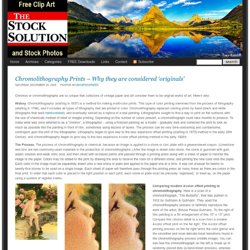
Here’s why: History. Chromolithography (starting in 1837) is a method for making multi-color prints. This type of color printing stemmed from the process of lithography (starting in 1796), and it includes all types of lithography that are printed in color. Chromolithography replaced coloring prints by hand (black and white lithographs that were hand-colored ), and eventually served as a replica of a real painting. The Process. Comparing modern 4-color offset printing to chromolithography . In this 10X enlargement you can really see how each hand-drawn dot in the chromo print (left) is uniquely different than the photo-mechanical ‘ruled’ dots in today’s modern 4-color offset prints (right image). Documenting an era. Opposition by some artists. Increasing value. NOTE: Much of the information for this post comes from a Wikipedia page on chromolithography .
Untitled. Jessie Willcox Smith illustrator. Illustration: Jessie Willcox Smith “Remember the feeling when turning the page was almost too much to bear?

As adults grown weary of clichés and redesigned storylines, we too easily forget the initial jolt, the power, almost drug-like, of those first readings, when imagination flared up and seemed capable of consuming us. . ” – Roger McGough in The Pleasure of Reading, edited by Antonia Fraser (Bloomsbury, 1992) “What I sought in books was imagination. It was depth, depth of thought and feeling; some sort of extreme of subject matter; some nearness to death; some call to courage. “I lay voluptuously on my stomach on the big bed, blissfully alone, and I felt a thrill which has never left me as I realised that the words coming magically from my lips were mine to say or not say, read or not.
The Water-Babies: Illustrations by Jesse Willcox Smith (A Library of Congress Swann Foundation Exhibition) Jessie willcox smith. Cavern Wallpaper // Blog » Blog Archive » Book Binding artist Paul Bonet. While thumbing through an Art Deco book on design, found these ridiculously beautiful designs by Belgian artist Paul Bonet from the 20s-50s.
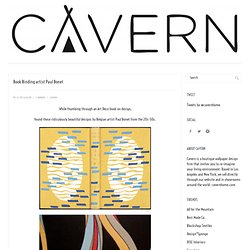
Peter D. Verheyen - Bookworks. Creative Daily. Mini uni project – deconstruct a book, relevent to the book itself.
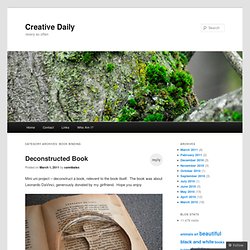
The book was about Leonardo DaVinci, generously donated by my girlfriend. Hope you enjoy. Popular Retellings of the Norse Myths. 1680 Anonymous AM 738 4to Edda Oblongata Illustrated Manuscript 1691 Trogillus Arnkiel's The Cimbrish Heathen Religion Cimbrische Heyden-Religion The last roster of Germanic Gods prior to the dissemination of the Poetic Edda in modern times.
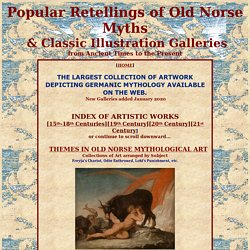
THE 18th CENTURY THE MODERN ERA BEGINS Presenting Miscellaneous Works of Art from the 18th, 19th and 20th centuries 1719 Bernard de Montfaucon L'Antiquité expliquée et représentée en figures 1720-1729 John Michael Rysbrack The Saxon Gods 1760 Ólafur Brynjúlfsson Sæmundar og Snorra Edda Illustrated Manuscript 1771 Dr. Andreas Gottlieb Masch The Prillwitz Idols THE 19th CENTURY THE DAWN OF EDDIC SCHOLARSHIP 1812-1813 Frederich David Gräter Idunna and Hermode Illustrations 1812-1821 The Mythology Feud A Battle for Artistic Freedom 1821 Herman Ernst Freund A Pioneer in Modern Norse Art Sculptor of The Ragnarök Frieze A Panoramic View 1831 Gustav Thormod Legis Alkuna: Nordische und Nordslawische Mythologie Illustrations 1868-1930 (?) 1920 M. Forgotten Illustrator: Viera Gergel'ova 1. Forgotten Illustrator: Viera Gergel'ova 1 Viera Gergel'ova, 1972, illustration for Puf a Muf by Natasa Tanska Viera Gergel'ova is the seventh illustrator featured in my Forgotten Illustrators series.
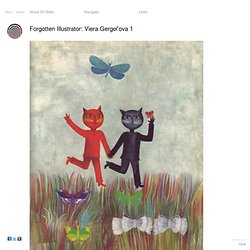
I can't find any information about her, but it appears she was working in Bratislava in the 60s and early 70s. 1985, A Fairy Tale. 1985, A Fairy Tale Illustrations from Märchen, edited by Karlhans Frank (Literarische Texte im Unterricht / Literary Texts in the Classroom series), published by the Goethe-Institute in 1985 Ursula Kirchner Doris Lerche Axel Hertenstein Janosch I will investigate this guy (and a lot of the others, of course).

Benno Geisler Malgorzata Konwerska, "Zwei Aschenbrödel" (Two Cinderellas?)